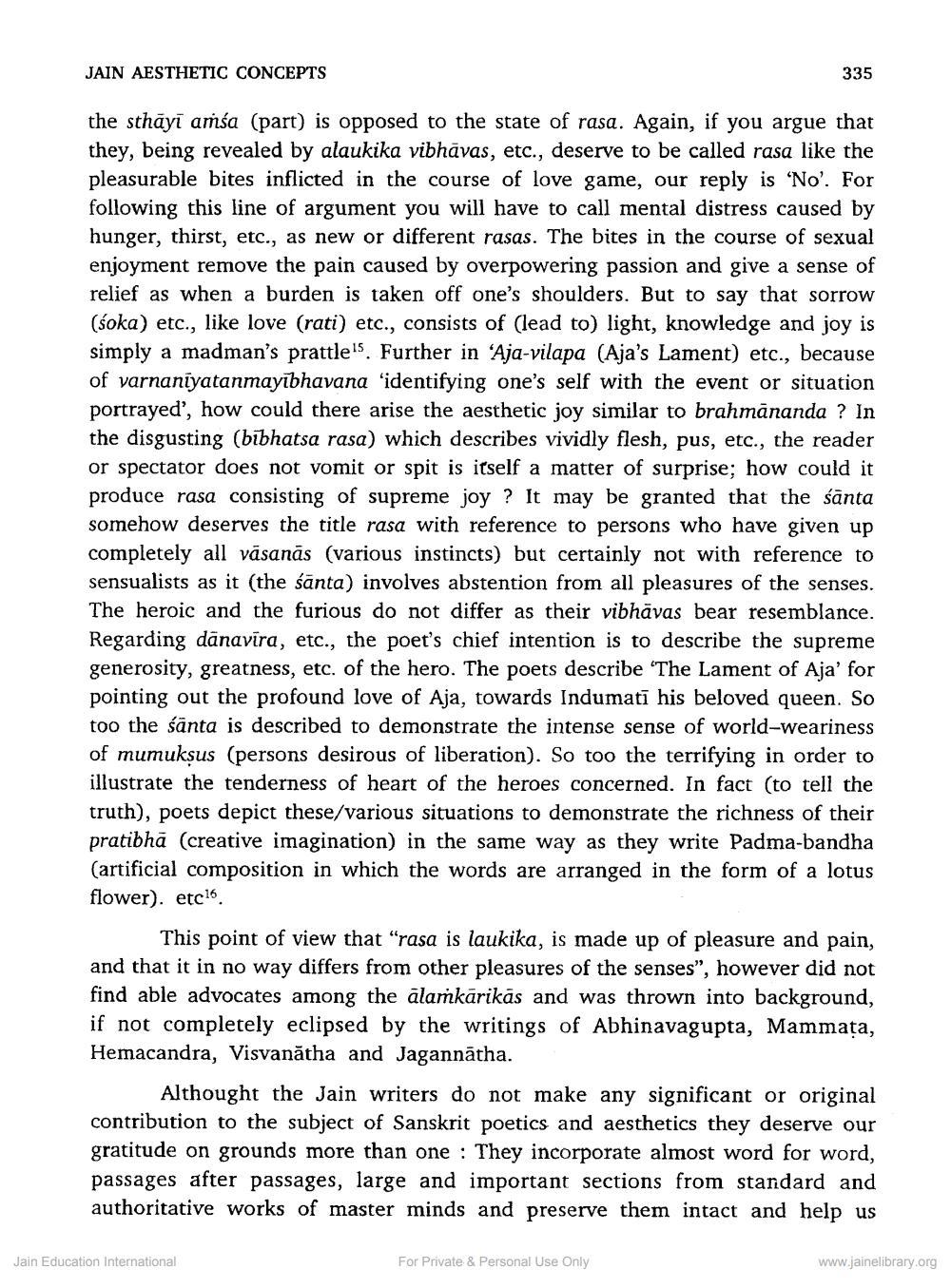________________ JAIN AESTHETIC CONCEPTS 335 the sthayi amsa (part) is opposed to the state of rasa. Again, if you argue that they, being revealed by alaukika vibhavas, etc., deserve to be called rasa like the pleasurable bites inflicted in the course of love game, our reply is 'No'. For following this line of argument you will have to call mental distress caused by hunger, thirst, etc., as new or different rasas. The bites in the course of sexual enjoyment remove the pain caused by overpowering passion and give a sense of relief as when a burden is taken off one's shoulders. But to say that sorrow (soka) etc., like love (rati) etc., consists of (lead to) light, knowledge and joy is simply a madman's prattles. Further in 'Aja-vilapa (Aja's Lament) etc., because of varnaniyatanmayibhavana 'identifying one's self with the event or situation portrayed', how could there arise the aesthetic joy similar to brahmananda ? In the disgusting (bibhatsa rasa) which describes vividly flesh, pus, etc., the reader or spectator does not vomit or spit is itself a matter of surprise; how could it produce rasa consisting of supreme joy ? It may be granted that the santa somehow deserves the title rasa with reference to persons who have given up completely all vasanas (various instincts) but certainly not with reference to sensualists as it (the santa) involves abstention from all pleasures of the senses. The heroic and the furious do not differ as their vibhavas bear resemblance. Regarding danavira, etc., the poet's chief intention is to describe the supreme generosity, greatness, etc. of the hero. The poets describe 'The Lament of Aja' for pointing out the profound love of Aja, towards Indumati his beloved queen. So too the santa is described to demonstrate the intense sense of world-weariness of mumuksus (persons desirous of liberation). So too the terrifying in order to illustrate the tenderness of heart of the heroes concerned. In fact (to tell the truth), poets depict these/various situations to demonstrate the richness of their pratibha (creative imagination) in the same way as they write Padma-bandha (artificial composition in which the words are arranged in the form of a lotus flower). etc16. This point of view that "rasa is laukika, is made up of pleasure and pain, and that it in no way differs from other pleasures of the senses", however did not find able advocates among the alaskarikas and was thrown into background, if not completely eclipsed by the writings of Abhinavagupta, Mammata, Hemacandra, Visvanatha and Jagannatha. Althought the Jain writers do not make any significant or original contribution to the subject of Sanskrit poetics and aesthetics they deserve our gratitude on grounds more than one : They incorporate almost word for word, passages after passages, large and important sections from standard and authoritative works of master minds and preserve them intact and help us Jain Education International For Private & Personal Use Only www.jainelibrary.org




